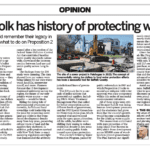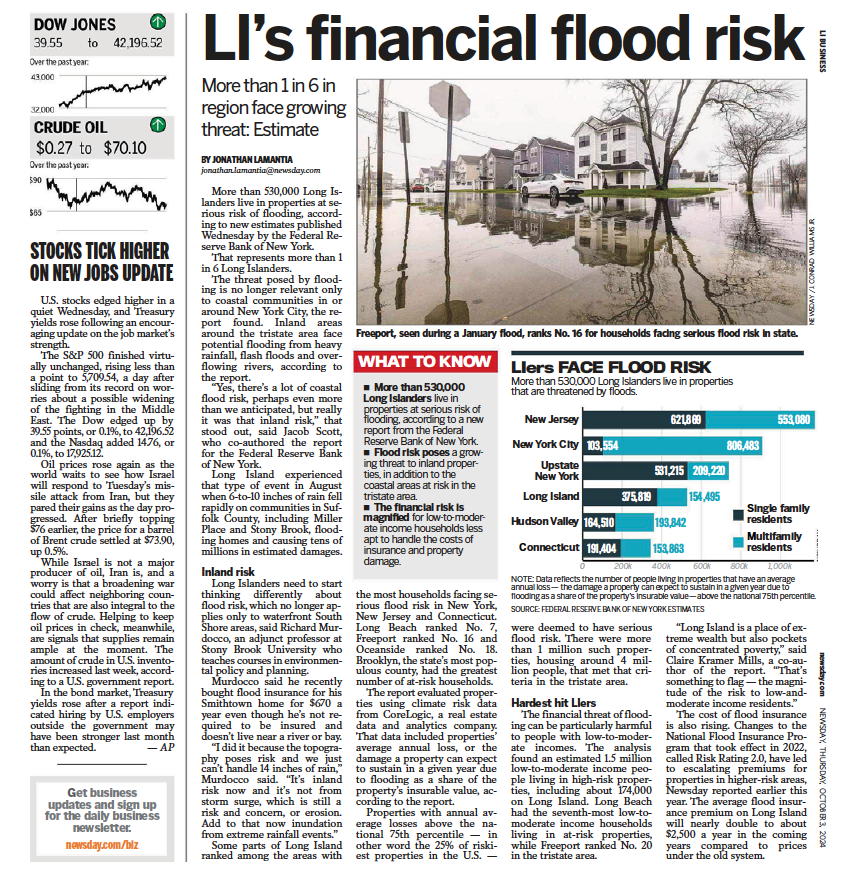The following was written for the Long Island Press. You can read the original here.
The development winds are shifting across Long Island. Have you felt them?
From Elmont to Montauk, municipalities are embracing concepts that, if introduced with a straight face 10 or 20 years ago to a town or local zoning board would have been laughed at. In downtown areas, transit-oriented apartments are sprouting as policymakers scramble to create areas that millennials are supposedly demanding. In the past, suburbia flat out rejected such “urban” amenities, with fierce, resident-driven opposition fueling the NIMBY flames.
This new normal in regional trends has resonated here with policymakers jumping onboard as quickly as developers can request zoning variances.
Suburbia is being transformed—and this transformation is on a regional scale but it is being locally implemented, and it’s being driven by the very industry that puts shovels in the ground.
The popular narrative, however, would have you thinking otherwise.
In Islip, Heartland, Jerry Wolkoff’s mega project that casts a vast shadow over all the other proposals on LI, is essentially is a done deal as local politicians scramble to make the accommodations necessary for it to be built. Asreported by the Long-Islander, Heartland Town Square, with its 9,000 residential units and 1 million sq. ft. of retail space, will “help usher Long Island into the 21st century and help end the flight of young and old from Long Island.”
With the goal of coordinating the municipal development efforts at TRITEC Real Estate’s Ronkonkoma Hub, the towns of Islip and Brookhaven have forged a “regional alliance,” enabling the ambitious project to gain considerable momentum by securing and pursuing financing via local, state and federal governments.
To create Wyandanch Rising, investment at the hamlet’s LIRR station has spanned more than a decade, and new apartments and parking facilities are finally starting to take off at the juncture of Straight Path and Long Island Avenue. This economically troubled area has struggled to find an identity, but thanks to the concept of “Smart Growth connectivity” and developer wherewithal, Wyandanch is poised to be the next Patchogue.
Nassau County has felt the winds blowing as well. The Hempstead Hub, the site of the dearly departed Islanders and empty acres of asphalt, will supposedly get a new biotech complex, parking structures and recreational facilities that will breathe new life into the drab area.
From a bully pulpit of self-proclaimed Smart Growth activism, nonprofit development groups and developer think-tanks claim that these accomplishments are all due to a hyper-local approach that has roots in resident-based planning, but in reality, these efforts are anything but.
When municipalities across a large geographic area all seem to follow the same transit-oriented template, with the goal of linking to interconnected transit upgrades, and when the discussion and analysis of these projects is dominated by their vested interests and stakeholders, something bigger is at play than community charrettes.
In recent years, the line between regional planning and local development has blurred. If anything, now they are one and the same. Developers, battered after the recession tanked the Island’s single-family residential market (limited vacant land also contributed to it), have shifted toward building multifamily, mixed-use projects. The local political climate was amenable, rewarding variances to any developer who proposed anything remotely within the loose, unstandardized Smart Growth template.
The transformation of Long Island’s suburbia is indeed happening. But just because shovels are being placed in the ground, it doesn’t mean it can be called progress.
At Islip’s Heartland, not all is as rosy as its supporters claim. The massive project is moving ahead, despite residents’ concerns about its monumental density and the ability of local roads and highways to handle increased traffic volume. From municipal officials come half-hearted protests regarding the project’s construction phasing and final density upon completion. Despite these legitimate questions, the project has cleared significant hurdles from the Town of Islip and awaits final approval. Local, folksy planning isn’t spurred by developer dollars and town board indifference.
In Brookhaven, it’s almost the same story. TRITEC’s Ronkonkoma Hub got its genesis not with area residents writing what they wanted on a whiteboard, but with the 1988 electrification of the main line of the Long Island Rail Road. At the time, planners saw opportunity at the Ronkonkoma site, but lacked the political will and the private investment dollars to do much with it. As the MTA looks to build the much lauded double track between the project site and Farmingdale, it is clear that, in Ronkonkoma, progress is anything but local.
From a planning standpoint, this Hub is one of the best opportunities for true intermodal connectivity that could link trains, planes, automobiles and buses. Execution is different from theory, and it will be interesting to see if the occupancy rate of the residential and commercial pieces of the project will reflect the hype (and multi-tiered fiscal support) that surrounds the development.
Piles of press releases aside, Wyandanch has indeed risen, but only time will tell if the project spurs a renaissance. The community is resilient, and private investment in the area should be celebrated. But it is up to both Suffolk County and the Town of Babylon to make sure progress continues once the construction stops. This one investment will not correct years of neglect. The success of the project hinges on more than just a few new apartments and a shiny parking garage.
As for Nassau County’s hub, the vision is indeed grand, but the fiscal realities are overwhelmingly dire. At least when the winds are blowing favorably in Suffolk County, developers can afford to translate the breeze into tangible results. In Nassau, the taint of corruption and insolvency seems to loom over every developmental effort–a true shame for one of the wealthiest suburbs in the nation.
The currents of change are in motion—but the driving forces behind them aren’t as local as advocates so readily insist. Developers, the think tanks they establish, as well as the non-profit groups they serve as board members and funders, dominate the regional discussion about Long Island’s development track.
It’s up to residents and objective policymakers to ask who, exactly, is generating the hot air making the winds blow—and what is being blown away.
Rich Murdocco writes about Long Island’s land use and real estate development issues. He received his Master’s in Public Policy at Stony Brook University, where he studied regional planning under Dr. Lee Koppelman, Long Island’s veteran master planner. Murdocco is a regular contributor to the Long Island Press. More of his views can be found on www.TheFoggiestIdea.org or follow him on Twitter @TheFoggiestIdea.









